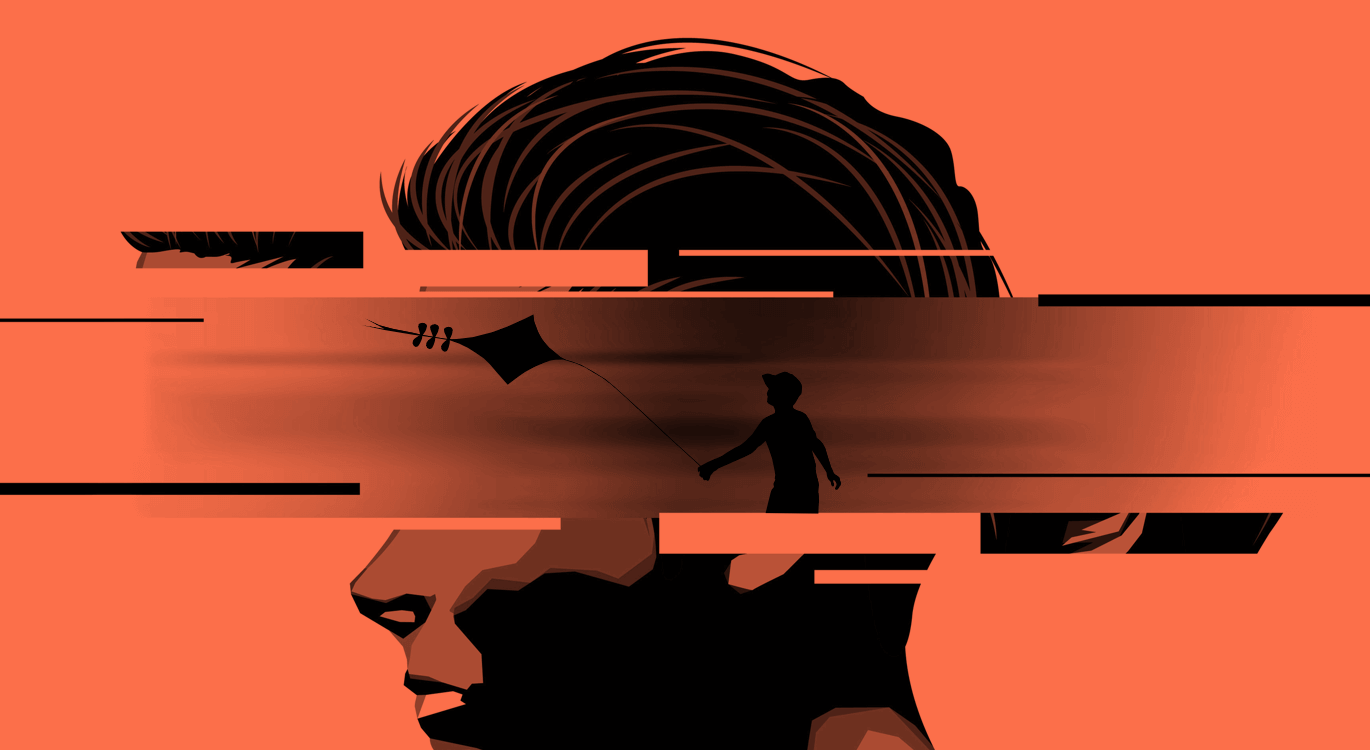“
Inner child? If the term makes you cringe, join the club.”
Yes, there’s really a little dude inside you and he needs your help


Yes, there’s really a little
dude inside you and he needs your help

Back in 2008, when I began digging around in the self-help section for the first time, I discovered a therapist and author named John Bradshaw. Bradshaw was one of the foremost experts in the 1980s for healing of childhood trauma, and a bit of a rockstar in the recovery community: he had books, a workshop series and lectures. He even had a TV show on PBS where he'd do therapy on the air. Bradshaw's book Homecoming really blew me away. I still remember staying up late to read and re-read it in my tiny, New York bedroom, mouthing silently, over and over: What. The. Hell?
Bradshaw worked a lot with a theory that's since been confirmed millions of times over by patients in psychotherapy: When a child's feelings are repressed—especially anger and sadness—a person grows up to be an adult with an angry, hurt child inside him, and this child can contaminate the person's adult behavior. Bradshaw, along with other authorities of the day, came to refer to this psychic phenomenon as our “Inner Child.”
“
Inner child? If the term makes you cringe, join the club.”
If the term makes you cringe, join the club. Part of the reason Bradshaw and other childhood trauma experts' work went mostly underground for several decades after reaching its height in the early '90s is because the concept of the Inner Child got nuked by the intellectuals, and buried in the sarcasm and irony of the coming decade, when being vulnerable or earnest was notoriously uncool.
To this day, no adult-aged man wants to readily admit he has a wounded little boy inside him, especially because we're sent subtle (or not-so-subtle) messages throughout our lives that being vulnerable is weak, undesirable and even punishable. So instead of acknowledging our lost boys, we bury and ignore them. The human psyche is genius at this disappearing act, so genius we usually don't even know it's happening. Through our twenties and early thirties, maybe life is rolling along fine. But then a crack appears. Men's work pioneer Robert Bly used to say the crack showed up in men around age 35 or 40. Astrologers might tell you the crack happens on the backend of your Saturn return (roughly ages 29-32). Carl Jung called the crack an impasse: a moment when things can no longer continue as they were, while Joseph Campbell called it the beginning of the true hero's journey.
On the outside, this event might look like a tragedy: burnout, rock bottom, or a devastating divorce or breakup. Maybe it’s a scandal or being diagnosed with depression; maybe it’s a midlife crisis or just waking up one day with a sudden interest in existentialism ("When you stare into the abyss the abyss stares back at you"). If any of these things has happened to you, you know the feeling, and you know it isn’t always pretty. But you’re not losing your shit. In fact, this crack is the gateway to your Lost Boy. And by this time, he’s usually been neglected for decades.


Lost Boy work is the deepest inner work we can do, and it isn't for the faint of heart. But it's better than ignoring it. Ever freak out at the office, or blow up at a loved one, and wonder: What the hell came over me? That's the Lost Boy. And uncovering the root causes of his pain usually takes a while. But when you really go for it, this work drops all the baggage you've been carrying since you were a kid. It lightens your load, and also reveals many gifts: Think of the imagination and spontaneity a child has—the unbridled passion for the day. When's the last time you felt that? Reclaiming that spirit is the gift of embracing your inner child.
This work is best done under the guided supervision of a trusted friend, group, therapist or coach. Below is a step-by-step guide on how we do it in coaching sessions:
Trauma is bound to happen somewhere in any normal boy's childhood. Perhaps it's a parent who's not around, maybe it's a bully or a coach with a mean streak. The first step is identifying the beliefs and feelings surrounding the events and having them validated by an objective person on the outside. A simple: "Yes, I can see how that must have been terrifying for you when you your dad left," goes a long way, especially since most men have learned to minimize their pain since before they can remember. This ushers in acceptance and clears the runway for healing.
Once the Lost Boy's experiences have been validated, the client tends to feel pretty raw. For the first time, he's experiencing the stark reality of his childhood, beyond any fantasies or false narratives he's been running to protect him from the truth. I had a client who exclaimed recently: “I can't believe I've been walking around believing my childhood was happy. Look at all the dysfunction that happened!”
This reframe can be jarring, but it won't last forever. Experiencing all the original feelings is key. We have to honor our Lost Boy and give him the mic for a while. I think finding an old picture of us at the age we most identify our Lost Boy with can be helpful here, too. Put the photo somewhere you can see it daily: like in your wallet, the book you're reading, or taped to your monitor or desk. My encouragement for this period is to take it slow: lots of journaling, rest and even a massage can be helpful to keep everything flowing. As anyone who has experienced deep grief can tell you, it hurts like hell at the onset, but it's pure ecstasy when it's finally out of you.
As a coach, this phase is where I truly love being of support. I love championing my clients' Lost Boys, and encouraging them to do little things for them. When I was going through the deepest parts of my inner child work, I bought myself a football and brought it everywhere. My friends can tell you that all I ever wanted to do at the time was toss the ball around. That was my Lost Boy.
Some guys draw or paint, or stock up on the ice cream or cereal they loved as a kid. Others buy the coolest stuffed animal they can find and sleep with it every night. I have a client who likes playing imaginary games with his young son. For those men who have children, there are so many ripe opportunities to get in touch with our Lost Boy through our own kids. (It can be a point of huge connection and a very healing experience for our kids, as well, especially if you explain to them what's happening.) As time goes on, we realize we can't change the past, but what we can do is be a great dad to our Lost Boy in the present.
As our inner child begins to trust us and gets more integrated into our psyche, we'll usually start to see aspects of him that we buried begin to return. For many men, this manifests in a desire to travel, be spontaneous, write poetry, build furniture or learn an instrument. One friend who engaged in this work began dancing for the first time in thirty years. A client quit his corporate job and grew his hair long and wild like the rocker heroes of his boyhood. Another started collecting sneakers he wished his parents had bought him. It's not uncommon to see books written and canvasses painted by reclaimed Lost Boys, nor is it uncommon to see them set up new, exciting businesses once free.
However we choose to engage with our Lost Boy, know that the most important aspect is just to listen. As kids, many of us believe we can't speak our truth, and so the core gift of doing inner child work is to simply sit with our young selves and allow them to say, loudly and finally, “I'm here.”
You’ve now got a life coach at your disposal. Hit Sean up with any concern you’re currently struggling with: Trouble at work? Relationship worries, family struggles or general mental health concern? Let him help you tackle it each month in this column.
Advertisement